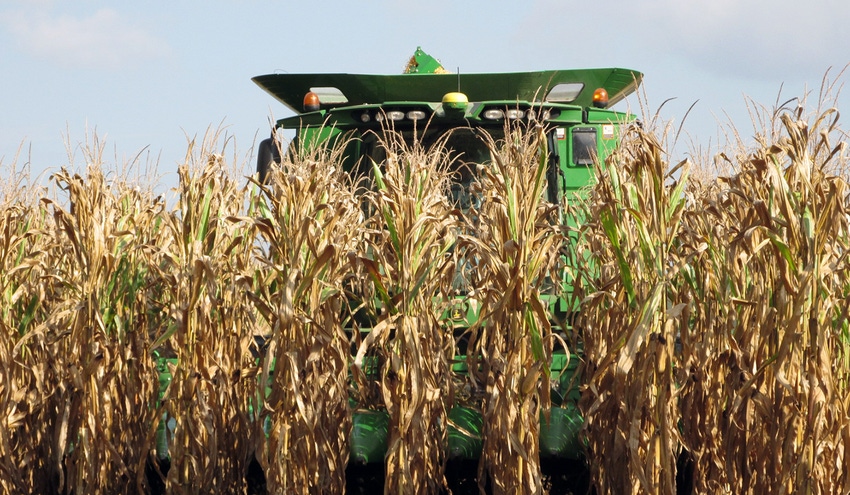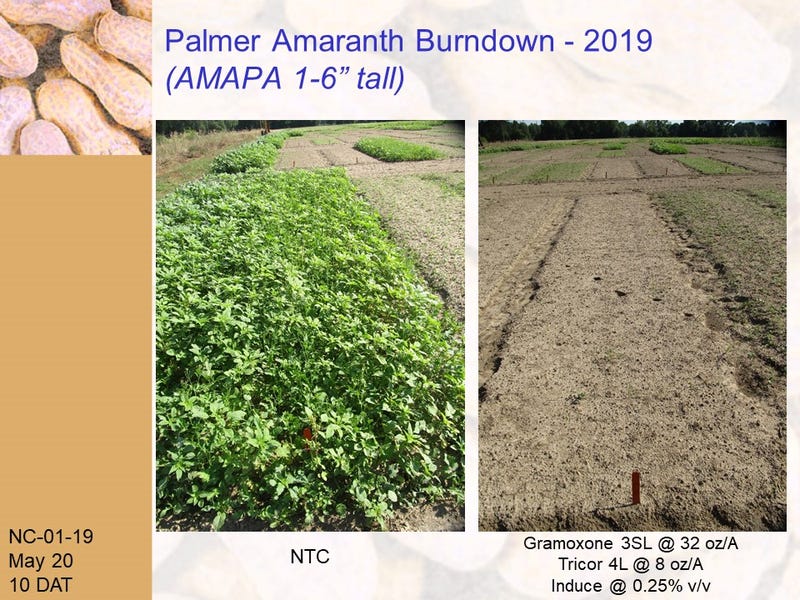August 5, 2020

Although the focus of most corn farmers at this time is getting the crop in the bin, it must also be the post-harvest management of troublesome weeds such as Benghal dayflower/tropical spiderwort, or BD/TS, and Palmer amaranth, or PA.
The main goal of post-harvest weed management programs for these weed species is to prevent seed-rain back into fields. Uncontrolled weeds after corn harvest can produce many seeds. Do not forget that one BD/TS plant can produce >1600 seeds, while one PA plant can produce >400,000 seeds! Additionally, there is still plenty of time between corn harvest and first frost for both of these weeds to thrive and flourish.
Now there are many options to consider but let me boil it down to just a few of my favorites.
I realize that nobody wants to hear this but BD/TS and PA plants that are larger than 6” tall will NOT be easily controlled with a single herbicide application. Consequently, tillage with extreme prejudice must be seriously considered when Goliath-like plants are present. Do not be afraid to bury that disk!
For post-harvest PA control, I prefer a combo of paraquat + metribuzin (Figure 1). This treatment provides both burndown and residual control that should last for at least 3-4 weeks. Before using metribuzin in the fall after field corn harvest, please review the labeled crop rotation restrictions. Worthy of note is the use of metribuzin for PA helps us get away from abusing popular WSSA Group 14/PPO herbicides such as Reflex (fomesafen) and Valor (flumioxazin). For the record, metribuzin is a photosynthesis inhibitor (WSSA Group 5).

For post-harvest control of BD/TS, I prefer a split application of paraquat (Figure 2). Split applications are necessary because BD/TS plants tend to be larger than desired at this time of year.

Other knock-down herbicide options for BD/TS include Aim (carfentrazone) or 2,4-D. WSSA Group 15 herbicides, such as Anthem Flex (carfentrazone + pyroxasulfone), Dual Magnum (s-metolachlor), Outlook (dimethenamid-p), Warrant (acetochlor) and Zidua (pyroxasulfone), could also be included if residual herbicides are desired and rotational crops are compatible.
For additional information about the control of BD/TS and PA after field corn harvest, please refer to the 2020 UGA Pest Management Handbook (pages 74 and 87).
Although the implementation of post-harvest control strategies for BD/TS and PA will not likely result in short-term economic gains, they will help rotational crop control programs by reducing seed-rain into a field and ultimately, weed densities. Simply put, less weed pressure in future crops equals potentially less money spent on weed control.
As always, good weed hunting!
About the Author(s)
You May Also Like






